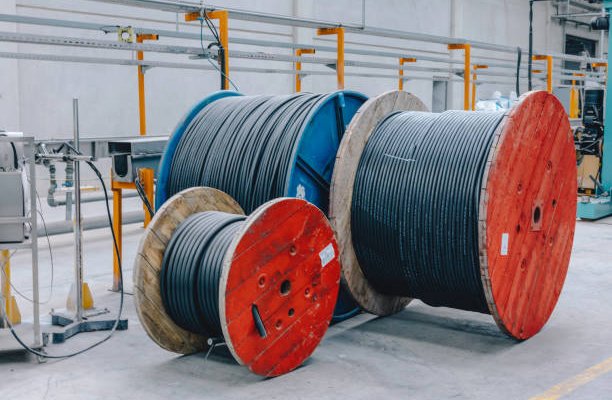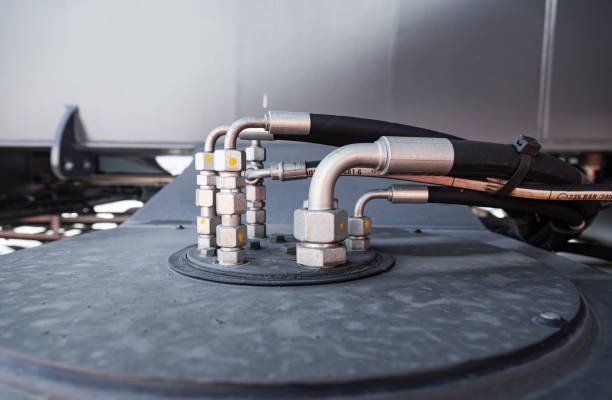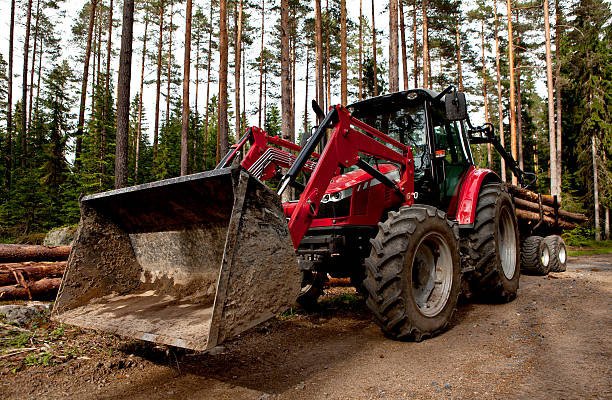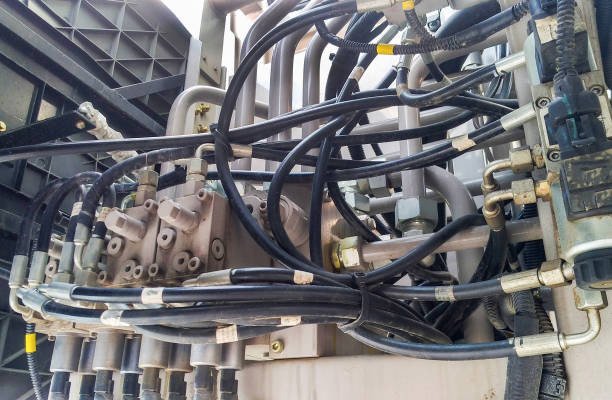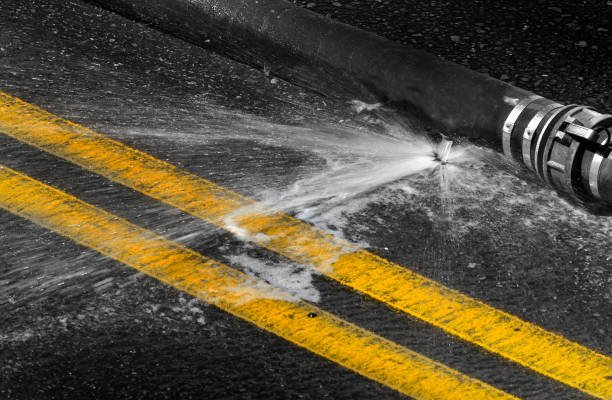Hydraulic hoses are a crucial component in many industries, providing the necessary power for machinery and equipment. However, improper storage of these hoses can lead to premature wear, contamination, and costly maintenance. Understanding the best practices for hydraulic hose storage can significantly extend their lifespan and reduce the risk of performance issues. This guide will walk you through the essential tips on how to store hydraulic hoses properly.
Why Proper Hydraulic Hose Storage Matters
Proper storage of hydraulic hoses is vital for maintaining their performance and reliability. Hydraulic hoses are made of materials that can degrade over time if exposed to unsuitable conditions. Storing hoses correctly not only extends their lifespan but also prevents issues like hose cracking, degradation, and contamination, which can compromise system efficiency.
Here are the primary reasons why proper hydraulic hose storage matters:
- Extends lifespan: Proper storage prevents the hoses from premature wear and tear, which can save you money in the long run.
- Prevents contamination: Keeping hoses away from contaminants like dirt, moisture, and chemicals helps to maintain their integrity and function.
- Reduces downtime: When hoses are properly stored, they are less likely to develop issues that cause equipment failures, reducing the amount of maintenance required.
Key Factors to Consider When Storing Hydraulic Hoses
When storing hydraulic hoses, it’s important to consider several factors that can affect their condition. These include environmental elements like temperature, humidity, and exposure to harmful substances. Taking the following factors into account will ensure your hoses remain in optimal condition:
- Temperature and humidity control: Excessive heat or moisture can cause hoses to degrade or swell. Always store hydraulic hoses in a cool, dry location to avoid these issues.
- Avoiding direct sunlight and UV rays: UV radiation can weaken hose materials, causing them to crack and become brittle over time. Ensure hoses are stored in a shaded area or indoors to protect them from the sun.
- Preventing contact with harsh chemicals: Exposure to chemicals like oils, solvents, and cleaning agents can damage the hose material, leading to leaks and wear. Store hoses away from these substances.
Proper Storage Techniques for Hydraulic Hoses
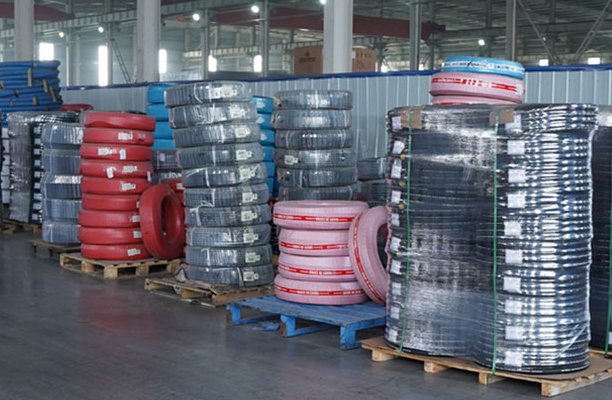
Adopting the right storage techniques for hydraulic hoses is key to ensuring their longevity. Here are some essential storage practices:
- Coiling and stacking: Coiling hoses into neat loops helps prevent kinks and tangles that could damage the hose material. When stacking hoses, ensure they are not under pressure or excessive weight.
- Using hose racks and reels: Using hose racks and reels can organize hoses and keep them properly aligned. These tools prevent hoses from becoming tangled or crushed.
- Keeping hoses off the floor: Storing hoses off the ground helps prevent damage from abrasion, moisture, or dirt. Use racks, hangers, or hooks to suspend hoses safely.
How to Prevent Hose Contamination During Storage
Contamination is one of the leading causes of hydraulic system failures. Dust, dirt, moisture, and debris can enter the hose and compromise its performance. To prevent contamination during storage, follow these best practices:
- Seal hose ends: Always use protective caps and plugs to cover hose openings. This prevents contaminants from entering and keeps the internal components clean.
- Store hoses in a clean environment: Avoid storing hydraulic hoses in areas prone to dust, dirt, or industrial debris.
- Keep hoses dry: Moisture buildup can lead to corrosion of metal fittings and degradation of the hose material. Ensure that hoses are stored in a dry place.
By implementing these measures, you can extend the life of your hydraulic hoses and maintain their efficiency when in use.
Recommended Storage Environment
The environment where hydraulic hoses are stored plays a significant role in their longevity. Hoses should be stored in a controlled setting that minimizes exposure to damaging factors.
Follow these recommendations for an ideal storage environment:
- Temperature control: Store hoses in a temperature range of 50°F to 70°F (10°C to 21°C). Extreme heat or cold can cause the rubber material to degrade.
- Humidity management: Keep relative humidity below 70% to prevent moisture buildup and mold formation.
- Ventilation: Ensure proper airflow in storage areas to reduce heat buildup and prevent stagnant air from affecting the hose material.
- Avoid ozone exposure: Ozone can cause rubber hoses to crack over time. Keep hoses away from electrical equipment, fluorescent lights, and other sources of ozone.
Following these environmental guidelines will help preserve your hoses and reduce the risk of premature wear.
Storing Hydraulic Hoses for Short-Term vs. Long-Term Use
The way you store hydraulic hoses depends on whether they are intended for short-term or long-term use. Different approaches ensure optimal preservation:
Short-Term Storage
- Hoses can be kept loosely coiled on racks or reels for quick access.
- Ensure they are kept away from high-traffic areas to prevent accidental damage.
- Regularly inspect for dust or moisture accumulation.
Long-Term Storage
- Store hoses in their original packaging if possible to provide additional protection.
- Use sealed storage containers or protective covers to prevent exposure to contaminants.
- Rotate stock periodically to prevent prolonged stress on any single hose.
Understanding the difference between short-term and long-term storage will help you implement the most effective storage method for your needs.
How to Label and Organize Hydraulic Hoses for Easy Access
Proper organization of hydraulic hoses not only prevents damage but also saves time when selecting the right hose for use. Implementing an effective labeling and storage system helps keep inventory in check.
Best Practices for Labeling Hydraulic Hoses
- Use color-coded tags: Assign different colors to hoses based on size, pressure rating, or application.
- Mark production or purchase date: Keeping track of the age of each hose ensures timely rotation and prevents the use of old, deteriorated hoses.
- Include identification numbers: Label each hose with a unique code to match it with corresponding documentation or maintenance records.
Organizing Your Hose Inventory
- Use designated storage racks: Keep hoses sorted based on type and size to avoid confusion.
- Implement a first-in, first-out (FIFO) system: Always use older hoses first to prevent them from degrading in storage.
- Store frequently used hoses in an accessible area: Keep commonly used hoses within reach to minimize handling and movement.
Maintaining a well-organized inventory reduces the chances of using an expired or damaged hose, improving overall efficiency.
Common Mistakes to Avoid When Storing Hydraulic Hoses
Improper storage can significantly shorten the lifespan of hydraulic hoses. Avoiding common mistakes will help ensure their durability and performance.
Frequent Storage Mistakes
- Overstretching or bending hoses excessively: Sharp bends and tight coils can weaken the hose structure, leading to cracks or leaks.
- Leaving hoses exposed to direct sunlight: UV rays cause the rubber to degrade, reducing flexibility and durability.
- Ignoring manufacturer guidelines: Always follow the storage recommendations provided by the hose manufacturer.
- Placing hoses on rough or dirty surfaces: Dirt and abrasions can cause unseen damage, leading to leaks or bursts during operation.
Being mindful of these mistakes can help protect your hydraulic hoses and avoid costly replacements.
Signs That Your Stored Hydraulic Hoses Need Replacement
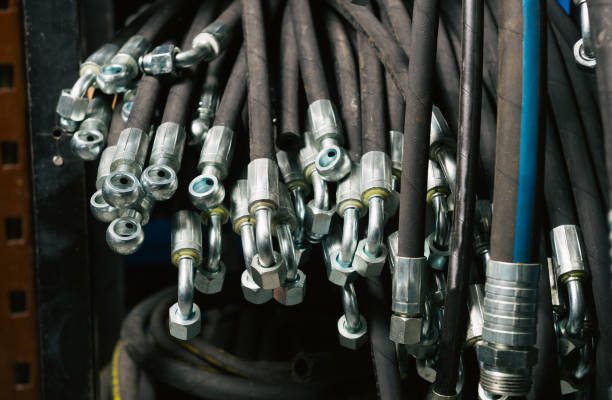
Even with proper storage, hydraulic hoses have a limited lifespan. Regular inspections can help you identify when a hose needs to be replaced.
Warning Signs of Hose Degradation
- Cracks and brittleness: Rubber hoses can dry out over time, leading to visible cracks and loss of flexibility.
- Bulging or blistering: Any abnormal swelling on the hose surface indicates internal damage and should be addressed immediately.
- Leaks or fluid seepage: Even minor leaks suggest hose failure and should not be ignored.
- Metal fitting corrosion: Rusted or damaged fittings can compromise the entire hose assembly.
Inspect stored hoses periodically and replace them as needed to prevent unexpected failures during use.
Best Practices for Storing Different Types of Hydraulic Hoses
Different types of hydraulic hoses require specific storage methods to maintain their integrity. Understanding these differences helps ensure proper storage and longevity.
Rubber vs. Thermoplastic Hoses
- Rubber hoses: Store in a cool, dark place to prevent UV exposure and oxidation. Avoid stacking heavy objects on top.
- Thermoplastic hoses: Keep away from extreme temperatures as they can become brittle in cold environments. Store in their original packaging when possible.
Braided vs. Spiral Hoses
- Braided hoses: Store loosely coiled to avoid kinking. Prevent excessive pressure on stacked coils.
- Spiral hoses: These are more rigid and require larger storage areas. Use racks or reels for optimal organization.
Understanding these distinctions ensures that each hose type remains in good condition until needed.
How Often Should You Inspect Stored Hydraulic Hoses?
Regular inspections help identify potential issues before they cause operational failures. Stored hoses should be checked periodically to ensure they remain in good condition.
Recommended Inspection Schedule
- Monthly checks: Inspect for visible cracks, leaks, and environmental damage.
- Quarterly maintenance: Test flexibility and look for internal deterioration.
- Annual replacement review: Assess whether older hoses should be rotated out of storage to prevent degradation.
Key Inspection Steps
- Check for signs of wear such as surface cracks, hardening, or brittleness.
- Examine metal fittings for corrosion or damage.
- Ensure hose flexibility by bending lightly and checking for stiffness.
- Look for contaminants like dust, moisture, or oil seepage.
By implementing routine inspections, you can extend the life of your stored hydraulic hoses and prevent unexpected failures.
Cost-Effective Storage Solutions for Small and Large Operations
Whether you’re running a small workshop or a large industrial facility, there are various cost-effective storage solutions to keep hydraulic hoses organized and protected.
Budget-Friendly Storage Options
- Wall-mounted hose racks: A simple and space-saving way to keep hoses off the floor.
- DIY PVC hose hangers: Affordable and easy to assemble for small workshops.
- Plastic bins with dividers: Helps keep smaller hoses neatly organized.
Industrial Storage Solutions
- Hose reels: Ideal for high-usage areas, preventing unnecessary coiling and uncoiling.
- Vertical hose storage systems: Saves space and allows for easy retrieval.
- Climate-controlled storage rooms: Best for long-term storage in large facilities.
Choosing the right storage solution based on your needs ensures that your hoses remain organized and in top condition.
Expert Tips for Maximizing the Lifespan of Hydraulic Hoses
Proper storage is just one aspect of maintaining hydraulic hoses. Implementing additional care strategies will further extend their lifespan and prevent unexpected failures.
Pro Tips for Long-Lasting Hoses
- Store hoses based on manufacturer recommendations: Always follow storage guidelines provided by the manufacturer to ensure the best preservation methods.
- Invest in high-quality storage equipment: Using proper racks, reels, and sealed containers helps prevent unnecessary wear and damage.
- Train employees on proper storage techniques: Ensuring that everyone handling hydraulic hoses understands correct storage methods minimizes errors and extends hose life.
By following these expert recommendations, you can significantly reduce the frequency of hose replacements and lower overall maintenance costs.
Conclusion
Proper storage of hydraulic hoses is essential for maintaining their quality, ensuring safety, and reducing unnecessary costs. By considering factors like temperature, humidity, contamination prevention, and organization, you can keep hoses in excellent condition for long-term use.
To summarize, remember to:
- Store hoses in a cool, dry, and well-ventilated area.
- Use racks, reels, or bins to keep hoses organized and protected.
- Inspect stored hoses regularly for signs of wear, contamination, or damage.
- Label hoses for easy identification and implement a first-in, first-out (FIFO) system.
- Avoid exposure to UV rays, harsh chemicals, and extreme temperatures.
By implementing these best practices, you can maximize the lifespan of hydraulic hoses and ensure reliable performance when they are needed most.
FAQs
1. How long can hydraulic hoses be stored before use?
Hydraulic hoses can typically be stored for up to 5 years if kept in proper conditions. However, regular inspections are recommended to ensure their integrity before use.
2. What is the best way to store used hydraulic hoses?
Used hoses should be cleaned thoroughly before storage and sealed at the ends to prevent contamination. Store them in a dry and organized manner to avoid kinks and damage.
3. Can hydraulic hoses be stored outdoors?
Outdoor storage is not recommended due to exposure to UV rays, moisture, and extreme temperatures. If necessary, store hoses in covered containers or sealed racks to minimize environmental exposure.
4. How do I prevent hose ends from getting contaminated?
Always use protective caps and plugs on hose ends before storage. Store hoses in a clean, dust-free environment to minimize contamination risks.
5. What are the risks of improper hydraulic hose storage?
Improper storage can lead to hose degradation, contamination, reduced flexibility, and premature failure. This increases maintenance costs and can result in unexpected downtime of hydraulic systems.

